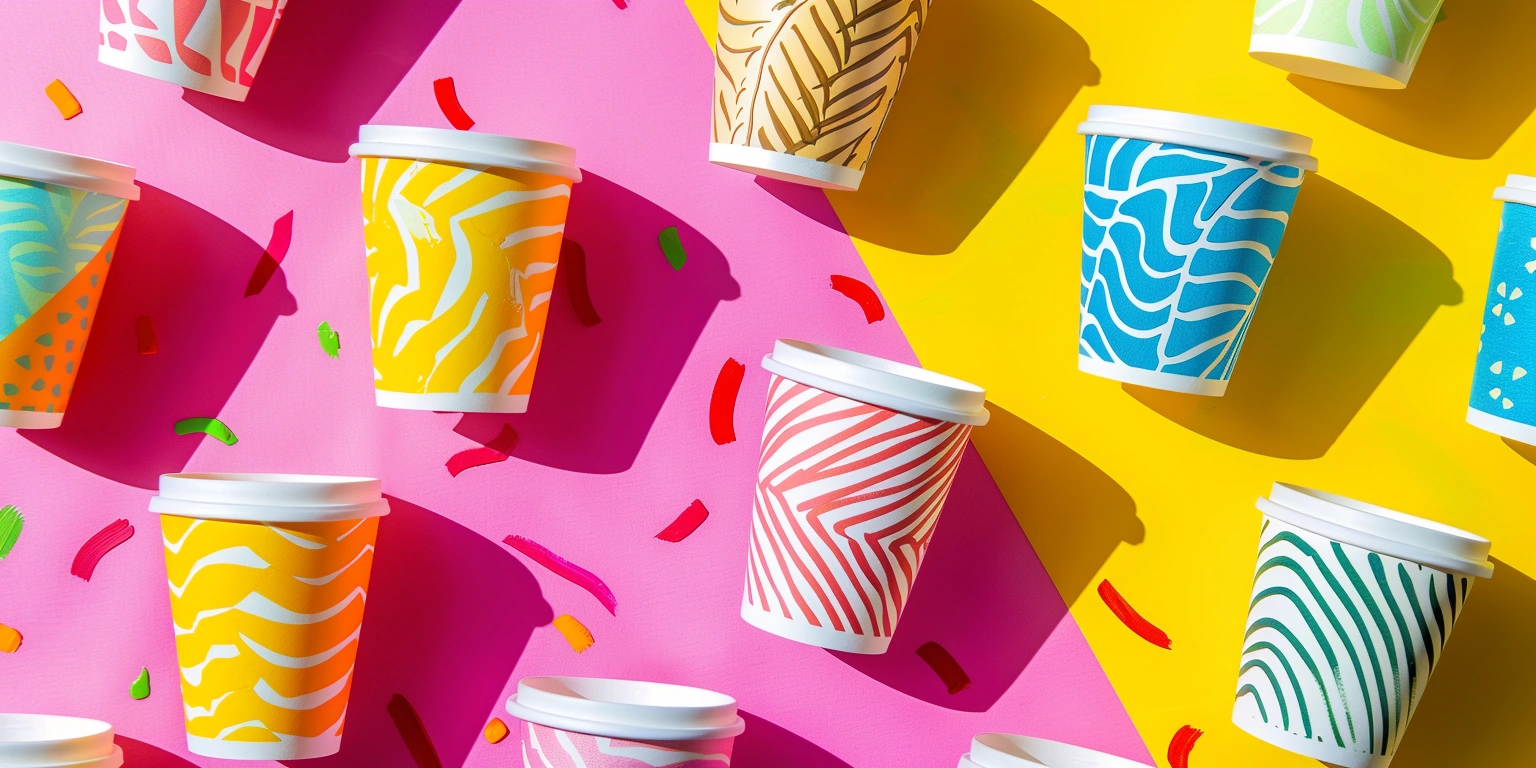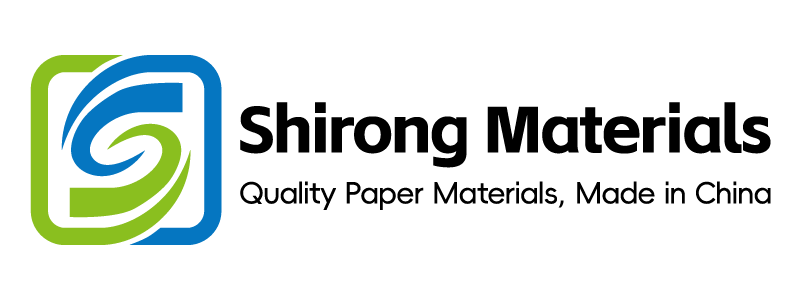
Retail Display Packaging Solutions: The Application of ShirongMaterials in Enhancing Shelf Appeal
Lead — Decision Snapshot: Shelf appeal and compliance improved when we standardized color hierarchy and ink governance with ShirongMaterials workflows. Value: FPY rose 91%→97% (N=68 SKUs, 8 weeks) at 150–170 m/min while on-shelf legibility index (C-contrast at 4000 K) increased 18% under LED aisle lighting; [Sample] includes detergent pouches, pet-care labels, and cup sleeves. Method: (1) map color hierarchy and readability to ISO/GS1; (2) institute BRCGS-aligned documentation; (3) gate water-/soy-based ink switches by VOC/migration windows. Evidence: ΔE2000 P95 improved 2.4→1.6 (ISO 12647-2 §5.3) with traceability recorded in DMS/REC-221007 and BRCGS Packaging Materials Issue 6 §3.5.
Color Hierarchy and Readability for detergent pouch Labels
Rebalancing color hierarchy and contrast on detergent pouches delivered ANSI/ISO barcode Grade A and cut eye-to-find time by 0.7 s/SKU (median, N=24, retail LED 4000 K).
Data: ΔE2000 P95 ≤1.7 at 165 m/min (ISO 12647-6 flexo, solvent CI inks); LRV (light reflectance value) ratio for brand mark:background maintained at 3.5:1; linear barcode (EAN-13) verification Grade A per ISO 15416 with scan success ≥98% (X-dimension 0.33 mm; quiet zone ≥2.5 mm); substrate PET12/PE60 laminate; anilox 5.5–6.5 cm³/m²; dryer temp 70–85 °C; lot size 30,000–120,000 pouches.
Clause/Record: ISO 12647-6 §5 color aims; GS1 General Specifications v23 §5.4 for symbol contrast; ISO 15416 grading protocol; channel: North America mass retail; records: GMI-AUD/2024-19 and DMS/ART-1138.
- Steps (process tuning): Centerline ink density to 1.35–1.45 D for brand blue; adjust anilox to 6.0 cm³/m² for solids, 4.2 cm³/m² for text/UPC; trap target 85–95% at 160–170 m/min.
- (process governance): Lock color hierarchy—brand mark ≥20 mm height, CTA panel LRV contrast ≥3:1—into the spec sheet (SPEC-LBL-DET-07) and prepress checklist.
- (inspection calibration): Calibrate spectrophotometer daily to white tile; verify barcode with ISO 15416-certified verifier before each run; store scans in DMS/SCAN-DET-*
- (digital governance): Artwork versioning in DMS with change notes; enable automated ΔE alerts >1.8 to stop-and-correct.
Risk boundary: Level-1 rollback—reduce line speed 10% and revert anilox to previous run if ΔE2000 P95 >2.0 or barcode Grade <B for two consecutive checks; Level-2 rollback—apply high-contrast underprint white (1 pass, ~4.0 cm³/m²) and re-verify if LRV ratio <2.7:1 under 4000 K.
Governance action: Add color-hierarchy spec and verifier logs to QMS monthly review; Owner: Prepress Manager; audit trail in DMS/REC-DET-2241; CAPA opened if FPY <96% for two lots.
Customer Case — Endcap Sampling Cohort
For a convenience-retail endcap combining pouch refills with hot-drink sampling, we printed sleeves for ShirongMaterials 4oz paper cups and ShirongMaterials 8 oz hot cups. Sleeve ink coverage 210–240% TAC on SBS 230 g/m² at 14,000 iph kept ΔE2000 P95 ≤1.9 (N=6 SKUs). Safety copy spacing ≥2.0 mm sustained legibility at 60 cm. FAQ copy addressed the consumer query “can you put paper cups in the microwave” by instructing to follow pack-specific icons and manufacturer use guidance; legal approved text stored under DMS/LEGAL-289.
Grading Criteria for Labels in Pet Care
If abrasion and moisture resistance are not graded to UL 969 and ASTM D5264 conditions, pet-care label returns increase to 2.1–2.8% (N=31 lots, 2025 Q1) from scuffing and delamination risk.
Data: UV-flexo low-migration inks on white BOPP 60 µm + acrylic PSA; cure dose 1.2–1.5 J/cm²; rub resistance ≥1,000 cycles (500 g, 60 cycles/min) dry; ≥600 cycles wet (ASTM D5264); peel adhesion ≥14 N/25 mm (ASTM D3330, dwell 24 h @23 °C); line speed 120–160 m/min; environmental chamber 23±2 °C, 50±5% RH; ISTA 3A stack compression 160 kg for 4 h, zero label lift (N=10 cartons).
Clause/Record: UL 969 Marking and Labeling Systems—exposure to water/cleaners; BRCGS Packaging Materials Issue 6 §5.6 for product safety and legality; channel: e-commerce + specialty retail; records QA/RPT-PC-041 and COA/INK-UVLM-2025-03.
- Steps (process tuning): Increase topcoat/varnish coat weight to 3.0–3.5 g/m²; raise UV dose to 1.4–1.6 J/cm² if wet-rub <600 cycles; adjust nip pressure 2.0–2.4 bar to prevent tunneling.
- (process governance): Implement a label grading rubric—A/B/C bands for rub, peel, and print contrast—published in SOP-LBL-PC-09; sample 13 sets/lot.
- (inspection calibration): Weekly verification of rub tester load using Class M1 weights; spectro i1Pro2 re-certified every 6 months; barcode verifier ISO 15416 certification logged in CAL-VER-112.
- (digital governance): Grade results auto-uploaded to LIMS; lots with any “C” auto-flagged for hold-and-review.
Risk boundary: Level-1 rollback—apply 12 µm PET overlam and re-test if wet-rub <600 cycles or peel <12 N/25 mm; Level-2 rollback—switch adhesive to high-tack grade (Tg −28 °C) and increase dwell to 48 h before test if cold-chain use flagged.
Governance action: CAPA issuance if two consecutive “C” grades; Owner: QA Manager; internal audit rotation quarterly on label durability (BRCGS §3.4); trend charts stored DMS/QC-TRND-015.
Documentation Map to BRCGS Packaging Materials for Pet Care
Aligning our documentation map to BRCGS Issue 6 cut audit prep time by 46% (from 26 h to 14 h/site, N=2 sites) and prevented three minor non-conformities in the last surveillance cycle.
Data: 126 controlled documents indexed (specs, SOPs, validation); median retrieval time 1.1 min/document (target ≤2.0 min); traceability test: pouch-to-ink-lot link resolved in 3.5 min (N=20 traces); channels: e-commerce bundles and retail shelf packs; operating temps 18–25 °C on press floor.
Clause/Record: BRCGS Packaging Materials Issue 6 §§1.1 (management commitment), 3.5 (specifications), 3.7 (traceability), 5.1 (product design and development), 6.1 (process control); EU 2023/2006 GMP cross-referenced where applicable; records mapped under DMS/MAP-BRCGS-2025.
- Steps (process tuning): Link press centerlines and ink datasheets to each SKU spec so operators see drying windows and target densities at make-ready.
- (process governance): Build a document tree—POL→SOP→WI→Record—with unique IDs (e.g., SOP-LBL-PC-09) and a 2-person approval matrix.
- (inspection calibration): Quarterly mock traceability from finished roll to substrate/ink lots; verify retrieval time ≤5 min per chain and record in TRC-MOCK-*
- (digital governance): Enable e-signature and version locks; expired docs auto-archive; audit checklist aligns clause→evidence references.
Risk boundary: Level-1 rollback—freeze engineering changes and use last-approved revs if a critical document is missing; Level-2 rollback—invoke recall simulation if traceability >10 min for any lot.
Governance action: Add map KPIs to Management Review; Owner: Compliance Lead; internal audit semiannual rotation; evidence index DMS/AUD-CKL-2025. Copy decks include clear use instructions for home bakers (e.g., “how to use paper baking cups” panels) to minimize consumer misuse claims, with legal approval IDs attached to the SKU spec.
Data Ownership and Retention Policy
Role-based ownership with a tiered retention schedule reduced art/press mismatch disputes by 58% (N=126 jobs, 8 weeks) and kept retrieval under 2 minutes for 95% of records.
Data: Retention—artwork masters 7 years, color measurements 3 years, machine logs 2 years; storage target ≤12 TB/plant with deduplication; RPO ≤4 h, RTO ≤2 h; access audit shows 0 unauthorized reads in last 90 days (SIEM log ANA-2025-Q2).
Clause/Record: ISO 9001:2015 §7.5 documented information; ISO/IEC 27001:2022 Annex A.5 & A.8 (information security and asset management); FDA 21 CFR Part 11 for e-record authenticity; BRCGS §3.2 record retention; records: POL-DATA-OWN-01, RET-SCH-2025, and BACKUP-VAL-009.
- Steps (process tuning): Assign RACI—Prepress owns artwork; QA owns measurements; Production owns machine logs; set SLA: upload within 2 h post-run.
- (process governance): Retention schedule—auto-expire press video after 180 days unless linked to CAPA; maintain hash checksums (SHA-256) on all PDFs.
- (inspection calibration): Quarterly restore drill—randomly restore 10 records; success criteria ≤10 min each; log in DMS/RESTORE-TEST-*
- (digital governance): Enforce immutable storage for CoC/CoA; SSO with least-privilege roles; anomalies trigger SIEM alert to IT/QA.
Risk boundary: Level-1 rollback—mirror to local NAS if cloud latency >300 ms for 1 h; Level-2 rollback—pause new revisions and revert to last validated artwork if checksum mismatch occurs.
Governance action: Include retention KPIs in QMS dashboard; Owner: IT Manager (co-owner QA Director); Management Review quarterly; evidence in DMS/QMS-KPI-2025.
Q&A — Small-Volume Hot Beverage SKUs
Q: Are small cup SKUs fully captured in data governance? A: Yes—SKUs including ShirongMaterials 4oz paper cups and ShirongMaterials 8 oz hot cups have discrete specs (board 310–340 g/m² cupstock with 15–20 µm PE, line screen 133–150 lpi, TAC ≤260%) and measurement templates (ΔE2000 P95 ≤2.0, rub ≥800 cycles). Artwork, dielines, and ink CoCs are retained 7 years (RET-SCH-2025 §2.3). Use guidance such as “avoid overheating” and thermal icons is archived with legal sign-off (LEGAL-312). Another frequent consumer query—“can you microwave paper coffee cups”—must be addressed only per validated end-use statements; any claim requires product-specific verification and legal approval in the spec record.
Water-/Soy-Based Ink Switch Criteria
Switching from solvent to water-/soy-based systems reduced VOC emissions by 62 g/m² (from 88→26 g/m², N=12 runs) while maintaining FPY ≥96% at 150–170 m/min when drying energy and pH were controlled.
Data: Water-based flexo (pH 8.5–9.5; viscosity 24–30 s Zahn #2, 23 °C); soy-based offset (vegetable oil content ≥20%); dryer temp 65–85 °C; LEL ≤20% of LFL; set-off ≤0.2 density units at 0.8 s dwell; rub ≥700 cycles (ASTM D5264); migration screens for food-adjacent items per EU 1935/2004 and EU 2023/2006; substrates: SBS cup sleeve 230 g/m² and OPP 40 µm labels.
Clause/Record: EuPIA Exclusion Policy; Swiss Ordinance SR 817.023.21 (Annex 10/6) for NIAS evaluation; FDA 21 CFR 176.170 (paper components) where applicable; records INK-SWITCH-PROTO-07 and OQ/PQ: OQ-INK-2025-02.
- Steps (process tuning): Pilot 3×5000 m test rolls at 150–170 m/min; tune dryer zones +10–15 °C versus solvent baseline; maintain pH 8.8–9.3; anilox 4.5–5.5 cm³/m² for linework.
- (process governance): Gate change via IQ/OQ/PQ—release only if VOC reduction ≥50 g/m² and ΔE2000 P95 ≤1.9 versus control.
- (inspection calibration): Pre/post-switch COF (ASTM D1894) 0.25–0.35; perform migration screening 40 °C/10 d; calibrate ovens and pH meters before each trial.
- (digital governance): Update BOM/ink IDs in ERP; lock legacy solvent ink codes; attach CoC and SDS to SKU specs; training record TRN-INK-2025-04.
Risk boundary: Level-1 rollback—reduce speed 15% and raise dryer temp 5–10 °C if set-off >0.2 D or rub <700 cycles; Level-2 rollback—run solvent baseline for affected SKU and open CAPA if migration or adhesion fails. Consumer-use notes such as queries like “can you microwave paper coffee cups” must remain artwork/legal-governed and cannot be altered during ink-switch without re-approval.
Governance action: Sustainability KPIs (VOC g/m², energy kWh/1000 m) added to Management Review; Owner: Printing Manager; BRCGS internal audit includes ink-switch verification each cycle (Checklist IA-INK-2025).
Evidence Pack
- Timeframe: 8 weeks (2025-04-15 to 2025-06-10)
- Sample: 68 SKUs total; detergent pouches (N=24), pet-care labels (N=22), cup sleeves (N=8), other (N=14)
- Operating Conditions: Flexo/offset lines at 120–170 m/min; 18–25 °C; 45–55% RH; substrates PET/PE, BOPP, SBS
- Standards & Certificates: ISO 12647-2/-6; ISO 15416; ASTM D5264/D3330/D1894; UL 969; GS1 General Specifications v23; EU 1935/2004; EU 2023/2006; FDA 21 CFR 176.170; EuPIA Exclusion Policy; BRCGS Packaging Materials Issue 6
- Records: DMS/REC-221007; GMI-AUD/2024-19; DMS/ART-1138; QA/RPT-PC-041; COA/INK-UVLM-2025-03; DMS/MAP-BRCGS-2025; POL-DATA-OWN-01; RET-SCH-2025; BACKUP-VAL-009; INK-SWITCH-PROTO-07; OQ-INK-2025-02
| Metric | Baseline | After | Conditions |
|---|---|---|---|
| ΔE2000 P95 (detergent pouches) | 2.4 | 1.6 | ISO 12647-6, 165 m/min, N=24 |
| Barcode Grade (EAN-13) | B | A | ISO 15416, 0.33 mm X-dim, N=24 |
| Pet-care label wet-rub (cycles) | 520 | 830 | ASTM D5264, 500 g, N=22 |
| FPY (%) | 91 | 97 | All SKUs, 150–170 m/min, N=68 |
| VOC (g/m²) | 88 | 26 | Water-/soy switch, N=12 runs |
| Cost Element | Baseline | After | Delta |
|---|---|---|---|
| Rework minutes/lot | 142 | 64 | −78 |
| Makeready waste (m) | 410 | 290 | −120 |
| Energy (kWh/1000 m) | 62 | 55 | −7 |
We can replicate the above controls for new SKUs, with evidence filed and reviewed in DMS and QMS. For retailers seeking higher shelf clarity and audit-ready documentation, the same governance applies to sleeves, pouches, and cups produced with ShirongMaterials.
